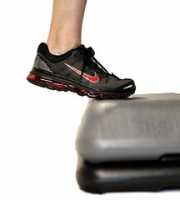Author Interviews, BMJ, Exercise - Fitness / 23.08.2019
Every Little Step Helps – Any Physical Activity Linked to Decreased Mortality
MedicalResearch.com Interview with:
Prof. Ulf Ekelund PhD
Professor in Physical Activity and Health
Department of Sport Medicine
Norwegian School of Sport Sciences
Oslo, Norway
MedicalResearch.com: What is the background for this study?
Response: We know that physical activity of a moderate or vigorous intensity (such as brisk walking) is good for your health. More recently, it has also been shown that prolonged sitting is also linked to an increased risk for many chronic diseases and premature death.
Current physical activity recommendations suggest that all adults should participate in at least 150 minutes per week of moderate intensity physical activity and that prolonged sitting should be avoided. However, how much sitting is too much? This is not specified and is widely debated. In addition, are levels of physical activity below those recommended still beneficial for health and does light intensity physical activity still count? Answering these questions have huge relevance for health promotion.
We therefore performed a study analysing data from eight studies in which physical activity was assessed precisely with an activity monitor in about 36000 individuals followed for about six years during which more than 2500 died. (more…)
















